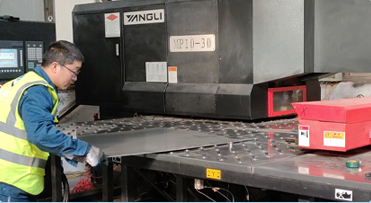Practical Guide to Housing for Layer Hens in Cages
Nov . 08, 2024 01:47 Back to list
Practical Guide to Housing for Layer Hens in Cages
Cages for Layer Chickens A Comprehensive Overview
The poultry industry has long relied on various housing systems for layer chickens, and one of the most widely adopted methods is the use of cages. Cages offer a structured environment that can significantly influence the productivity and welfare of hens. Within this context, we will explore the types of cages, their advantages and disadvantages, and the growing shift toward alternative housing systems driven by animal welfare considerations.
Types of Cages for Layer Chickens
Layer chicken cages can be categorized into three main types conventional cages, enriched cages, and free-range systems
.1. Conventional Cages These cages are designed to house a small number of hens in compact spaces. Each bird typically has less than one square foot of space, and while this method allows for high-density farming, it has faced criticism due to the limited mobility afforded to the hens. The primary advantage of conventional cages is their efficiency in space utilization and ease of management, as automated systems can effectively handle feeding, watering, and egg collection.
2. Enriched Cages To address some of the welfare concerns associated with conventional cages, enriched cages were developed. These cages provide slightly more space per bird (typically around one square meter for a few hens) and include features such as perches, nesting areas, and scratching pads. These enhancements aim to encourage natural behaviors among hens, such as nesting and social interactions, while still maintaining a level of confinement. Although enriched cages improve the living conditions for the birds compared to conventional systems, they still restrict movement compared to free-range or barn systems.
3. Free-Range Systems These systems allow hens to roam freely outdoors, providing a more natural living environment. The hens have access to pasture, where they can engage in foraging behaviors, which is believed to promote better mental and physical health. However, free-range systems can be more challenging to manage regarding biosecurity, predator control, and environmental factors. Additionally, production costs may rise due to lower stocking densities and the need for more extensive spaces.
Advantages of Cages
cages for layers chickens

Cages present several benefits that have led to their widespread use in the commercial poultry industry. Primarily, cages can enhance biosecurity, reducing the risk of disease transmission among flocks. By keeping hens contained, it is easier to monitor their health and control the spread of pathogens that can arise from contact with wild birds or other animals.
Moreover, cages facilitate efficient egg production. Automated systems can quickly gather eggs and provide feed and water, resulting in higher productivity levels. This efficiency translates into cost savings for producers, which can be passed down to consumers.
Disadvantages of Cages
Despite their advantages, the use of cages has been heavily criticized due to animal welfare concerns. Research indicates that confinement can lead to stress, aggression, and a lack of natural behaviors among hens. The limited space in conventional cages does not allow for activities like walking, dust bathing, or social interaction to the extent that many welfare advocates argue is necessary for a healthy, balanced life.
As public awareness of animal welfare issues rises, regulatory changes and consumer preferences are prompting a reevaluation of cage use in the poultry industry. Many countries are beginning to ban conventional cages altogether, pushing producers toward more humane alternatives such as enriched cages or free-range systems.
The Shift Toward Alternative Systems
This growing demand for more humane treatment has led to a significant shift in the poultry industry. Retailers and food brands are increasingly adopting cage-free policies, often pledging to source eggs from producers who adhere to higher welfare standards. This shift challenges producers to invest in new housing systems while balancing economic viability and consumer expectations.
In conclusion, cages for layer chickens represent a complex interplay of productivity, welfare, and ethical considerations. While they offer efficiencies and heightened biosecurity for producers, the associated welfare concerns cannot be overlooked. As society continues to evolve in its understanding of animal rights, the poultry industry must adapt to meet new standards that prioritize both efficiency and humane treatment of its animals. The future of layer chicken housing will likely reflect a compromise between these competing interests, leading to innovative solutions that respect the needs of both producers and chickens alike.
-
Automatic Feeding Line System-Pan Feeder Nipple Drinker|Anping County Yize Metal Products Co., Ltd.
NewsJul.29,2025
-
Hot Sale 24 & 18 Door Rabbit Cages - Premium Breeding Solutions
NewsJul.25,2025
-
Automatic Feeding Line System Pan Feeder Nipple Drinker - Anping County Yize Metal Products Co., Ltd.
NewsJul.21,2025
-
Automatic Feeding Line System Pan Feeder Nipple Drinker - Anping County Yize Metal Products Co., Ltd.
NewsJul.21,2025
-
Automatic Feeding Line System - Anping Yize | Precision & Nipple
NewsJul.21,2025
-
Automatic Feeding Line System - Anping Yize | Precision & Nipple
NewsJul.21,2025






